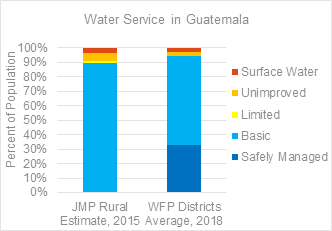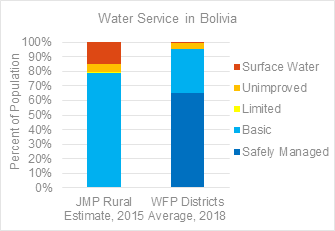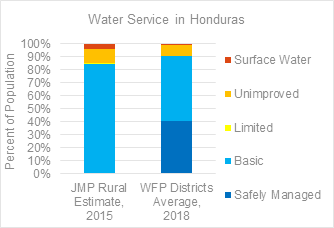by Kelly Latham, Director of Program Quality, Water For People
Versión en español aquí.
Achieving Sustainable Development Goal (SDG) 6 — sustainable water and sanitation for all — requires increased focus on water quality, but limited availability of usable water quality data is a major hurdle to seeing increases with coverage of safely managed water service. Despite the temptation to focus on better water treatment technologies, Water For People’s experience working with local governments in 35 districts across nine countries has highlighted the need strengthen water quality testing systems instead.
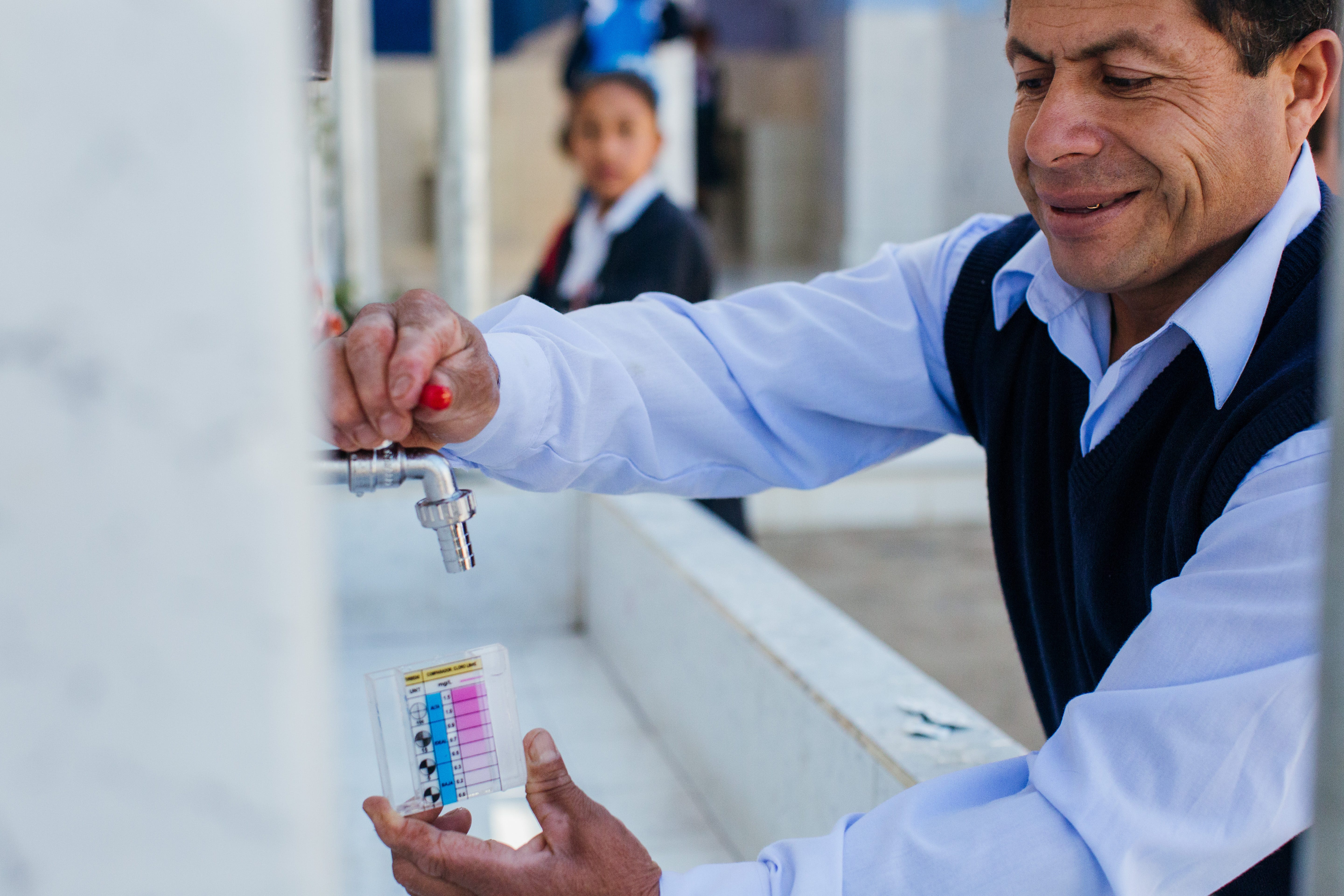
According to the Joint Monitoring Programme (JMP), safely managed water means water that is on premises, available when needed, and free of certain contaminants. Water quality data must be available and show that the water is free of specific contaminants. Without this data, it is difficult to understand how much of the gap in coverage is due to a lack of data versus actual poor water quality.
Figure 1 shows JMP data for drinking water in the rural areas of the nine countries where Water For People works. Only four countries — Peru, Nicaragua, India, and Nicaragua — have any coverage of safely managed water service. Is that actually true? Do the other countries not have any coverage of safely managed water service in rural areas? That is unlikely according to Water For People’s data. The data behind the graph below reveals that sufficient water quality data was only available for the four countries with safely managed service. So, it is possible that the other countries have safely managed service in rural areas, but there was not sufficient data for JMP to make national estimates.

It is very possible that more people have access to safely managed water than what the JMP data shows in Latin America, where water quality is the main challenge for achieving safely managed water service level goals. In Africa and India, having on-premise access or household connections is equally challenging, so the impact of water quality data alone is more difficult to analyze.
Let’s look at the three countries where we work in Latin America, where JMP shows 0% safely managed water service levels. Figures 2–4 show results from annual monitoring data collected with Water For People district partners in 2018, compared to JMP methodology for data collected in 2015.
It is important to note that the bars presented here do not represent a direct comparison because of the difference in years (2015 to 2018) and the different geographic scales (JMP’s national average and Water For People’s average across specific districts). However, the impact of insufficient water quality data can still be observed. Water quality is the cause for over 30% differences in safely managed water service coverage, and we do not know how much of that difference is due to data availability or an actual increase in services.
Although we don’t have the data needed to do a full JMP analysis with 2015 data, we do have water quality data from 2015 which shows at least 20% of water points in districts where we work meeting the criteria for safely managed water (20% in Guatemala, 22% in Honduras, and 27% in Bolivia). This suggests that the percentage of the population with access to safely managed water could be significantly different than the JMP projections.
Without sufficient water quality data to make national estimates, there is no clear picture on the world’s progress towards SDG 6. Perhaps more importantly, we miss out on a critical advocacy tool for promoting treatment at the local level. Why should community residents worry about water quality if those responsible for worrying about water quality do not?
So, what is so hard about water quality testing? Why is it not done? Or is it done but other factors limit the accessibility and use of water quality data?
Water For People asked these very questions as we struggled to access reliable water quality data from those responsible for testing in the districts where we work. We also asked more generally about the primary challenges related water quality, beyond testing. Some of the common water quality challenges identified across all of Water For People’s nine Country Programs included:
- While water quality laws and regulations exist in most contexts, they are not always enforced. District governments may not allocate sufficient budget for water quality testing, and service providers may not build the related costs into tariffs.
- National and district-level labs may exist, but can have long wait times, are located too far away, lack the proper equipment and staff, and charge fees that are too high for routine monitoring.
- In some cases, there is a culture of relying on NGOs to conduct (and pay for) testing and treatment which disincentivizes local institutions to fulfill their responsibilities.
- District governments and water committees sometimes lack the proper equipment and staff to perform treatment.
- Water committees may not see the value in treatment and may not disinfect water tanks properly. Community members may also have negative perceptions of chlorination and may not see the value in paying for water quality services until there is a problem.
- There are environmental threats impacting water quality that vary throughout the year due to rainfall patterns and increased land development in source catchment areas. Since it may not be feasible to test more than once a year, and since there are significantly different results when the test is done during the dry season versus the rainy season, it is difficult to understand the full impact of these environmental threats. It can also be difficult to prevent the degradation of these source areas.
- There is limited capacity to further analyze the data and parse it out by technology, geography, or other contextual factors to appropriately plan and prioritize efforts to improve water quality.
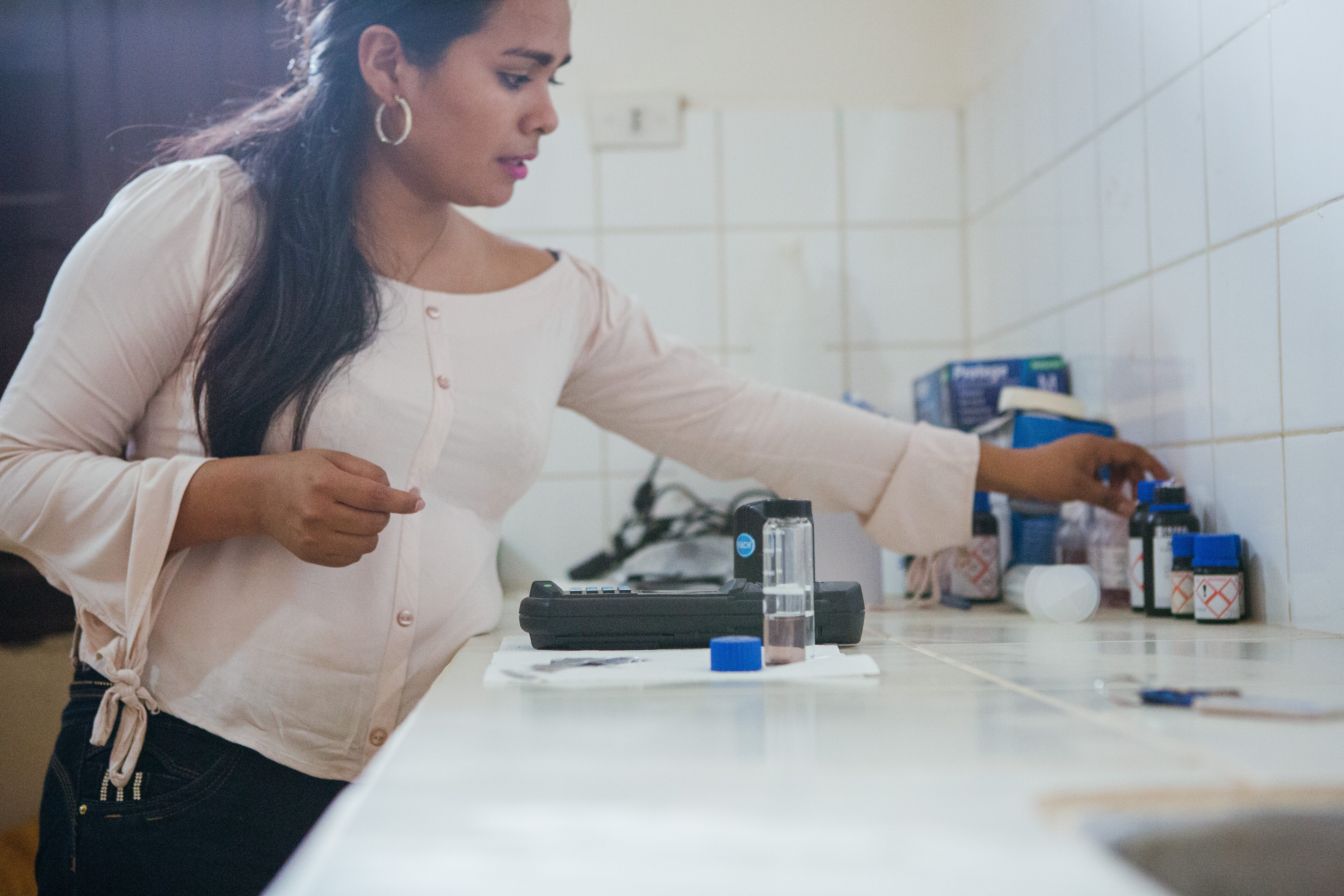
The need for new water treatment technology was never mentioned as a key challenge! Many other important challenges were identified, which relate more to the less exciting work of building stronger water quality testing systems — systems that are supported by regulations and budget, have labs and field testing equipment that are affordable and accessible, and are led by people trained to collect, analyze, evaluate, and plan.
As a result of these reflections, one of our primary strategies to improve water quality is to advocate and build capacity for improved water quality testing. Water For People’s Guatemala program has experienced some of the most significant challenges with water quality testing since we began focusing on it back in 2014. At that time, only 14% of the systems surveyed met the water quality target, with little improvement over the subsequent few years. In recent years, we have focused on building capacity of municipal WASH offices to perform annual water quality testing. We helped establish basic municipal labs and train WASH officials. As shown in Figure 3, over 30% of systems surveyed in 2018 met the water quality target, a 10% increase from the previous year and over double the result in 2014. Our Guatemala team is excited to see the results for 2019 based on the continued progress they have observed over the last year — not just with increased testing, but with the increased openness to treatment after communities see the results from water quality testing.
Building systems to improve water quality is slow and difficult work. Although I would argue this systems-strengthening is the most important work to be done, I will acknowledge that treatment technology is and always will be an important part of the solution, along with innovation to make treatment more affordable and accessible. But let’s not over over-invest in new treatment technologies. Let’s invest in institutional capacity building so that those responsible are able to perform the testing and use that data to set strategic priorities to achieve SDG 6. Once the system and culture of water quality testing is established, we can begin to see a future where residents want and demand treatment. That is the moment when treatment will spread.

